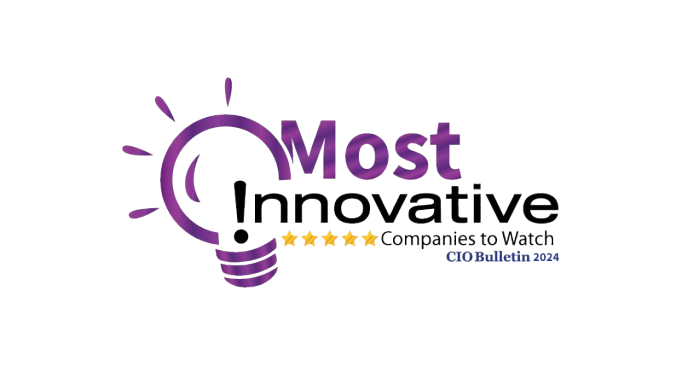How to Craft an Effective HubSpot Content Strategy
June 1, 2023
In today's competitive digital landscape, having a well-defined content strategy is crucial for businesses aiming to establish a strong online presence. With the right approach, your content can not only engage your target audience but also improve your website's search engine rankings. In this article, we will guide you through the process of developing an effective HubSpot content strategy that can help your website outrank competitors and achieve greater visibility in Google search results.
Understanding Your Target Audience
Before diving into content creation, it's vital to have a deep understanding of your target audience. By identifying their needs, pain points, and preferences, you can tailor your content to resonate with them effectively. Conducting thorough market research, leveraging customer surveys, and analyzing your existing data can provide valuable insights into your audience's behavior and preferences.
Conducting Keyword Research Keywords play a significant role in determining the visibility of your content in search engine results. Through comprehensive keyword research, you can identify the terms and phrases your target audience is using to search for information related to your industry or niche. By incorporating these keywords strategically into your content, you increase the chances of your website ranking higher in relevant search queries.
Developing a Content Calendar A content calendar serves as a roadmap for your content creation efforts. By planning and organizing your content in advance, you can ensure a consistent publishing schedule while aligning it with important dates, industry trends, and promotional campaigns. A well-structured content calendar allows for better resource allocation and facilitates effective collaboration among team members involved in the content creation process.
Creating Engaging and High-Quality Content One of the most critical aspects of outranking competitors is producing engaging and high-quality content that stands out from the crowd. Here are some essential guidelines to follow:
1. Compelling Headlines Crafting attention-grabbing headlines is essential for capturing your audience's interest and encouraging click-throughs from search engine results. Use strong, action-oriented language, include relevant keywords, and consider utilizing numbers or asking questions to make your headlines more enticing.
2. Well-Researched and Comprehensive Articles In-depth, comprehensive articles tend to perform better in search engine rankings. Conduct thorough research on your chosen topic, include relevant statistics, expert quotes, and link to authoritative sources to provide value to your readers. Aim to cover the topic from various angles, addressing different subtopics and aspects within your article.
3. User-Friendly Formatting Presenting your content in a user-friendly format is crucial for enhancing readability and user experience. Utilize subheadings, bullet points, and numbered lists to break down your content into easily scannable sections. Incorporate relevant images, infographics, and diagrams to visually enhance your content and facilitate understanding.
4. Incorporating Visual and Interactive Elements To engage your audience effectively, consider incorporating visual and interactive elements into your content. This can include images, videos, infographics, quizzes, surveys, or interactive widgets. Such elements not only make your content more appealing but also encourage users to spend more time on your website, signaling search engines that your content is valuable.
5. On-Page Optimization While focusing on creating high-quality content, it's crucial not to neglect on-page optimization. Ensure your content is properly formatted, utilizing H1 tags for main headings and H2-H6 tags for subheadings. Optimize meta titles and descriptions with relevant keywords to improve your click-through rates in search results. Additionally, interlinking your articles within your website can improve user navigation and provide additional context to search engines.
Publishing and Promoting Your Content Once you've created compelling content, it's time to publish and promote it effectively. Share your articles on your social media channels, email newsletters, and relevant online communities. Actively engage with your audience by responding to comments, encouraging social sharing, and seeking opportunities for guest blogging or collaborating with industry influencers. By promoting your content proactively, you increase the chances of attracting backlinks, social signals, and increased organic traffic, all of which can positively impact your search engine rankings.
Analyzing Performance and Optimization To continuously improve your content strategy and outrank your competitors, it's crucial to analyze the performance of your published content. Leverage analytics tools like Google Analytics and HubSpot's tracking capabilities to monitor key metrics such as page views, time on page, bounce rate, and conversions. Identify patterns and insights from the data and use them to optimize your content strategy further. Regularly update and refresh your existing content to ensure it remains relevant and up to date.
Conclusion Crafting an effective HubSpot content strategy involves a multi-faceted approach that encompasses understanding your audience, conducting thorough keyword research, creating engaging content, and actively promoting it. By consistently delivering high-quality, valuable content that resonates with your target audience, you can increase your website's visibility in search engine results and surpass your competitors. Remember to stay up to date with the latest industry trends, adapt your strategy accordingly, and continuously refine your content based on data-driven insights.
Conducting Keyword Research Keywords play a significant role in determining the visibility of your content in search engine results. Through comprehensive keyword research, you can identify the terms and phrases your target audience is using to search for information related to your industry or niche. By incorporating these keywords strategically into your content, you increase the chances of your website ranking higher in relevant search queries.
Developing a Content Calendar A content calendar serves as a roadmap for your content creation efforts. By planning and organizing your content in advance, you can ensure a consistent publishing schedule while aligning it with important dates, industry trends, and promotional campaigns. A well-structured content calendar allows for better resource allocation and facilitates effective collaboration among team members involved in the content creation process.
Creating Engaging and High-Quality Content One of the most critical aspects of outranking competitors is producing engaging and high-quality content that stands out from the crowd. Here are some essential guidelines to follow:
1. Compelling Headlines Crafting attention-grabbing headlines is essential for capturing your audience's interest and encouraging click-throughs from search engine results. Use strong, action-oriented language, include relevant keywords, and consider utilizing numbers or asking questions to make your headlines more enticing.
2. Well-Researched and Comprehensive Articles In-depth, comprehensive articles tend to perform better in search engine rankings. Conduct thorough research on your chosen topic, include relevant statistics, expert quotes, and link to authoritative sources to provide value to your readers. Aim to cover the topic from various angles, addressing different subtopics and aspects within your article.
3. User-Friendly Formatting Presenting your content in a user-friendly format is crucial for enhancing readability and user experience. Utilize subheadings, bullet points, and numbered lists to break down your content into easily scannable sections. Incorporate relevant images, infographics, and diagrams to visually enhance your content and facilitate understanding.
4. Incorporating Visual and Interactive Elements To engage your audience effectively, consider incorporating visual and interactive elements into your content. This can include images, videos, infographics, quizzes, surveys, or interactive widgets. Such elements not only make your content more appealing but also encourage users to spend more time on your website, signaling search engines that your content is valuable.
5. On-Page Optimization While focusing on creating high-quality content, it's crucial not to neglect on-page optimization. Ensure your content is properly formatted, utilizing H1 tags for main headings and H2-H6 tags for subheadings. Optimize meta titles and descriptions with relevant keywords to improve your click-through rates in search results. Additionally, interlinking your articles within your website can improve user navigation and provide additional context to search engines.
Publishing and Promoting Your Content Once you've created compelling content, it's time to publish and promote it effectively. Share your articles on your social media channels, email newsletters, and relevant online communities. Actively engage with your audience by responding to comments, encouraging social sharing, and seeking opportunities for guest blogging or collaborating with industry influencers. By promoting your content proactively, you increase the chances of attracting backlinks, social signals, and increased organic traffic, all of which can positively impact your search engine rankings.
Analyzing Performance and Optimization To continuously improve your content strategy and outrank your competitors, it's crucial to analyze the performance of your published content. Leverage analytics tools like Google Analytics and HubSpot's tracking capabilities to monitor key metrics such as page views, time on page, bounce rate, and conversions. Identify patterns and insights from the data and use them to optimize your content strategy further. Regularly update and refresh your existing content to ensure it remains relevant and up to date.
Conclusion Crafting an effective HubSpot content strategy involves a multi-faceted approach that encompasses understanding your audience, conducting thorough keyword research, creating engaging content, and actively promoting it. By consistently delivering high-quality, valuable content that resonates with your target audience, you can increase your website's visibility in search engine results and surpass your competitors. Remember to stay up to date with the latest industry trends, adapt your strategy accordingly, and continuously refine your content based on data-driven insights.
Featured Resources
Check Our Latest Resources

Proven ROI has been recognized as one of the Most Innovative Companies to Watch 2024 by CIO Bulletin—a testament to the company’s forward-thinking approach to CRM investments and strategic partnerships. By working closely with leading CRM platforms like HubSpot, Proven ROI is revolutionizing how businesses manage customer relationships, scale their operations, and drive growth.



